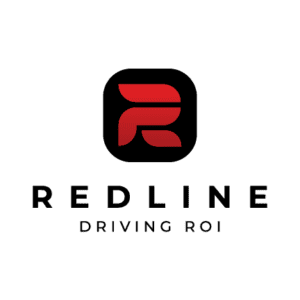How Vehicle Videos Boost Your Dealership Site’s SEO
Video is a critical part of the buyer’s journey when researching anything from nutritional supplements, to new cars, and everything in-between. Demand for video has been trending up for years and further accelerated during the pandemic. Lockdowns made in-person shopping difficult, if not impossible for most auto customers. Dealers needed better online awareness and more content on their website to empower a comprehensive virtual shopping experience. Multi-clip videos unique to each vehicle were a popular solution.
That doesn’t mean that all videos are created equal, though. In fact, there’s a huge difference between vehicle videos that make an impact, both to the consumer and to search engines, and those that don’t. In this article, we’ll break down some key elements that separate good videos from great ones, and how you can make video a powerful part of your dealership’s marketing strategy.
Quick Definitions

Let’s cover a few of the basics and some terminology. First, it’s important to understand the difference between SEO, or search engine optimization, and SEO for videos specifically, as they’re not exactly the same. Generally speaking, SEO is the process of improving your website to make it more visible to popular search engines like Google, so customers can more easily find what you’re offering and what sets you apart from your competition. SEO is a long and complicated subject to cover so for now, we’ll stick to how SEO basics can work for video.
Where SEO for video differs is that the strategies employed are used specifically for your vehicle videos, and not on any of the core elements of your website. There are still several similarities which we will cover below, but bear in mind that for video, it’s all about how the video is made and marked up, and where it’s hosted. The good news is, it’s much easier to optimize a video or video series than it is to optimize a whole website. Additional good news: with just a few simple steps, your videos can attract more views and earn more traffic from organic search.
There are a few basic SEO terms we’ll cover below that are good to understand at a high level:
Relevance
Your video’s relevance means the content you’re showing (usually the car for sale) lines up with what a customer is looking for.
Title, Description, and Tags
These are pretty straightforward, but they’re the main things that tell both customers and search engines alike what your video is going to cover.
Thumbnails
Thumbnails are the small images that show when a searcher is looking at a list of videos to watch. If you don’t set one yourself, sites like Youtube will generally grab one for you from the video directly.
Engagements
These can include views of your video, but they can also include comments and shares, which are good for your traffic as well. Views and engagements should both be looked at, but they’re not exactly the same.
Hosting
This is pretty much as it sounds; the host of your video would be the site that actually holds and displays the video (Youtube is the most common for dealerships).
Now that we have the basic terminology under our belt, let’s dive into how you can improve your videos for SEO right away.
It's All About the Views
As a general rule of thumb, you want to get as many qualified views of your videos as you can. Views used to be the most important factor for rankings. These days views are only slightly more important than engagements and audience retention.
There’s a synergy between getting views of your videos and getting website clicks, which means more engagements, leads, and sales. If your videos are hosted on a site like Youtube, and also embedded on your site, views on either source will help you improve search ranking. So, make sure you’re hosting your videos on Youtube and also embedded within the vehicle listings on your site to maximize your benefit.
Consider Your Thumbs

When done right, video thumbnails are eye-catching and customized so viewers know what they’re about to view. Vehicle videos are usually pretty straightforward when done correctly. Best practice is to customize thumbnails of automotive videos with a passenger-side image of the front of the vehicle, similar to the first photo shown on your website of the vehicle. Selecting consistent photos will give shoppers a feeling of professionalism and care about your dealerships and your vehicles.
If you don’t customize your thumbnails, sites like Youtube will auto-generate them and that means you could have a screenshot showing someone making an awkward face, or show a bad angle of the car in a static way. The good news is tools like the Youtube Studio App can help you make these thumbnails quickly, and they provide a few options for you to choose from as well.
Proper thumbnails keep your retention levels high because people will know what to expect. Retention keeps search engines rank your videos higher in search results.
Title Tags and Keywords
SEO keywords are one of the most important aspects of ranking optimization and some of the explanations can get complicated. In the simplest terms, keywords are the terms people use when they’re searching for something. These are the terms you want to consider when you’re creating or posting a video online.
As an example, if you lived in New Jersey and were looking for a 2022 Honda Civic, you may search something like “2022 honda civic new jersey” into your favorite search engine. Video results and websites will show in your search results, based on their search relevance.
Video titles and any tags you add to them must include keywords that are relevant to the actual video content. In other words, a video about a Honda Civic shouldn’t be titled “cool new car,” but should be named “Used 2022 Honda Civic for Sale in Toms River, NJ”. Viewers who find videos with high search relevance are more likely to view the entire video.
Keywords may be harming you even if they’re specific if there isn’t enough search traffic on the web for them. You can use tools like Wordstream or Wordtracker (both free at the time of this writing) to check the search volume for keywords in your area. Choosing relevant and popular keywords will improve your ranking consistently over time.
Descriptions and Other Tags
You’ve got an ideal thumbnail and a high quality video title… what’s next? A well-written description! So people know what they’re about to watch.
These descriptions don’t have to be long – a couple of sentences is usually enough – but they should be well written and give context to the video. That way, someone who’s interested in the topic can get a quick overview and decide if they want to watch it in the first place.
Pro-tip: write your video descriptions for humans, but not exclusively. You should also include relevant researched keywords in your descriptions so search engines can more easily index your videos. Search engines can’t watch your videos (at least not yet), so they rely on the descriptions to help them understand what each video is about. The more information you can give the search engine, the better your video will rank.
Lastly, you can add video tags so search engines do that much better matching a user’s search intent. You can add tags to your video directly in Youtube by following this handy guide. Use a few of the keywords you prefer most to boost the video search ranking.
The Takeaway:
We’ve covered a lot here on how SEO can be used to boost the views and performance of your vehicle videos. That said, none of this is a substitute for making sure your video quality is high. Having a good vendor partner who knows the ins-and-outs of this can be a powerful ally, but regardless of who does the shooting, following the basics outlined above should set your videos up for great success in search results, which will boost your traffic, engagement, leads, and sales.

Redline is dedicated to helping modern dealerships engage, communicate with, and cater to modern, tech savvy car shoppers. Our unique proprietary suite of products and services optimizes and redefines how automotive dealers reach, retain, market, and sell to customers — front end, back end, all ends.

